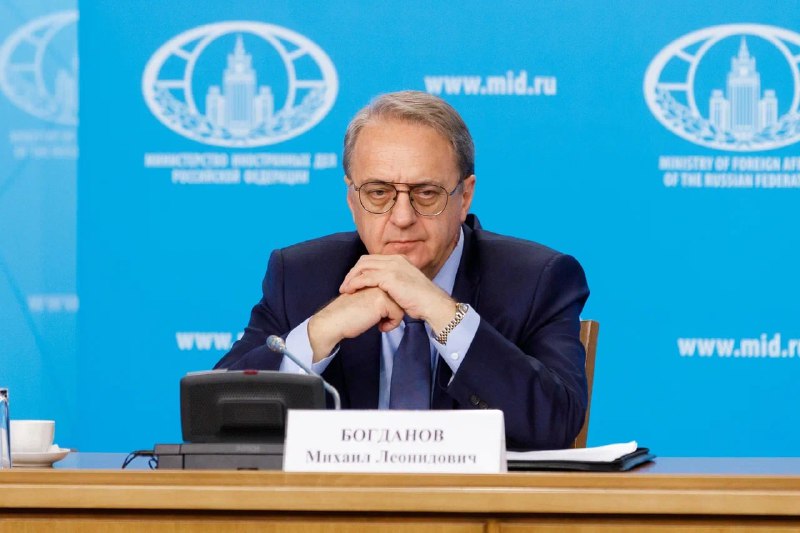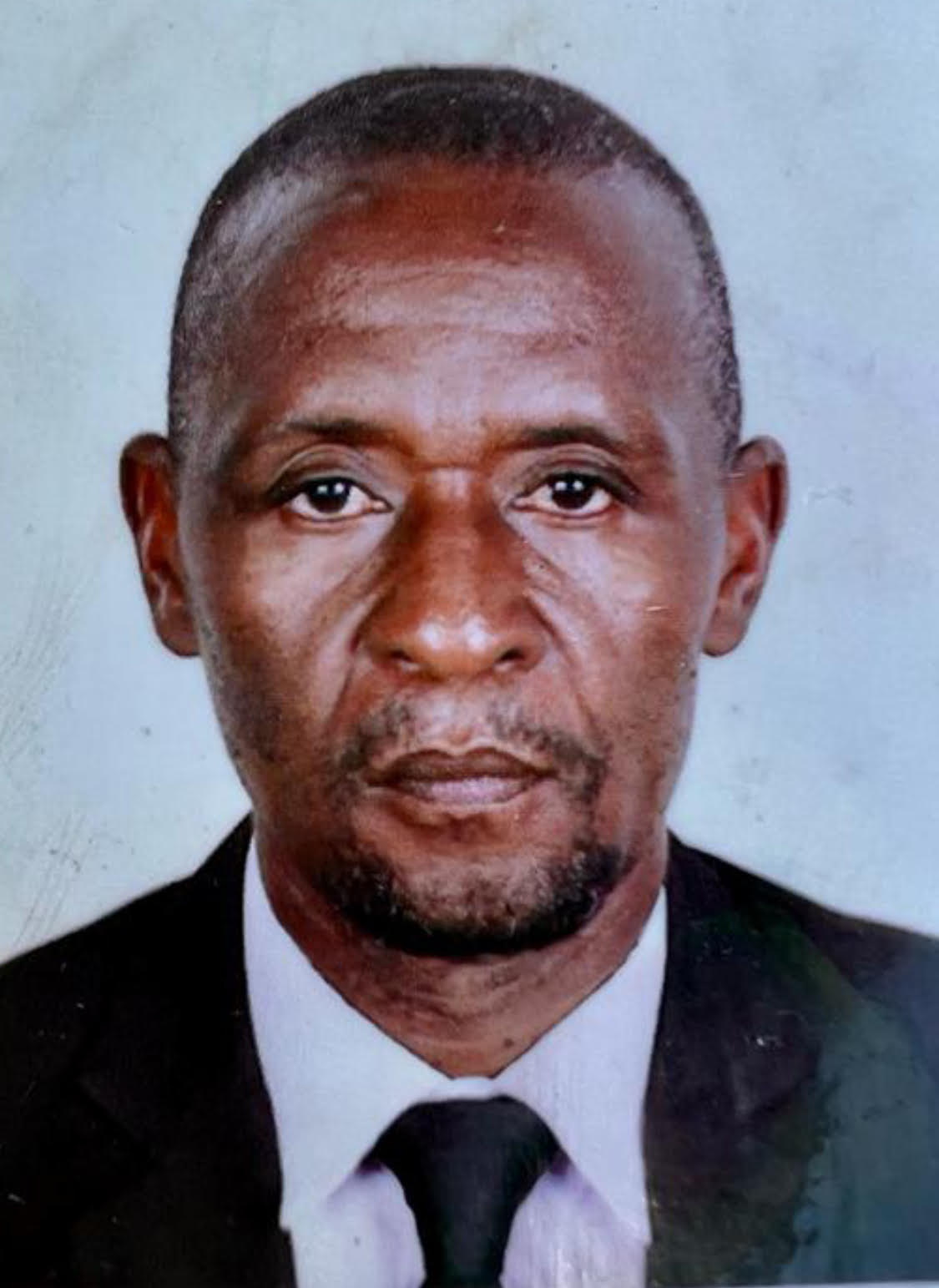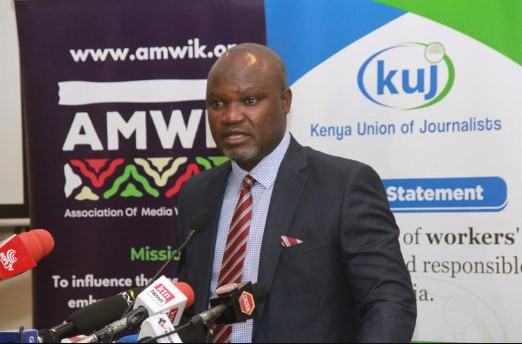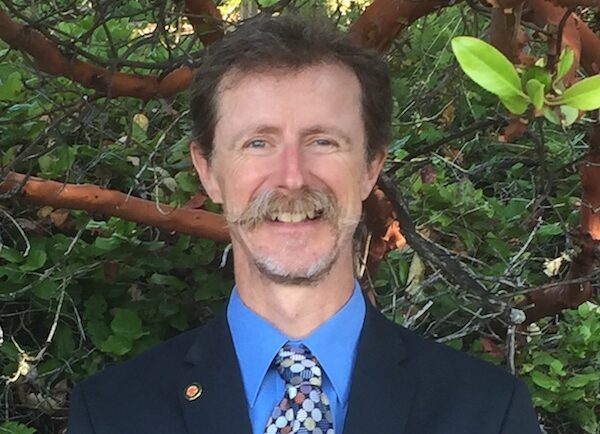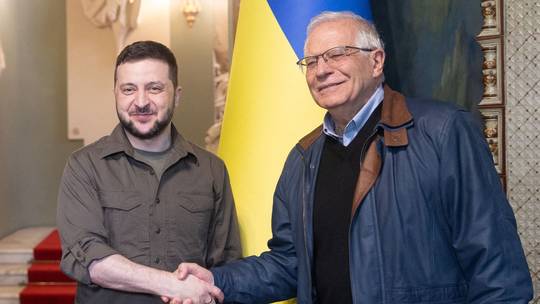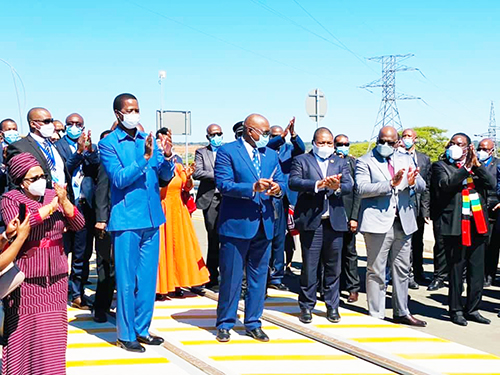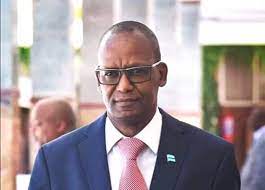
Elias Magosi ascended to the helm of the Southern African Development Community as Executive Secretary at the 41st Ordinary Summit of the Heads of State and Government of the SADC that was held on the 17th and 18th August 2021, in Lilongwe, Malawi. In this interview, he speaks to The Pan Afrikanist about his roadmap, the region’s response to the Covid-19 pandemic, and gives an assessment of the region’s political and economic situation.
TPA: What is your road map for SADC in the next four years when you are at the helm?
Elias Magosi: The strategic direction of the SADC region is guided by the SADC Vision 2050 and the SADC Regional Indicative Strategic Development Plan (RISDP) 2020-30. The Vision 2050 is firmed on the foundation of Peace, Security, and Good Governance, with Industrial Development and Market Integration; Infrastructure Development in support of Regional Integration; Social and Human Capital Development being interrelated pillars that are supported by Gender, Youth, Environment, and Climate Change, and Disaster Risk Management as cross-cutting issues. The Vision provides a long-term strategic direction, and its strategic interventions for the first ten years are elaborated in the SADC Regional Indicative Strategic Development Plan 2020 – 2030.

So, in the next four years, my responsibility is to ensure that all our efforts and resources are clearly directed to the implementation of agreed priorities in the RISDP in our quest to achieve deeper regional integration and development.
One other worth mentioning important component of the RISDP, is the Strategic Management of RISDP 2020–2030, as it is an acknowledgment that SADC needs to make some fundamental changes in its ways of doing business. This calls for us to ensure that we enhance institutional effectiveness and efficiency, find sustainable means of financing the regional integration agenda, enhance monitoring, evaluation, and reporting, and make sure that SADC’s activities, bring the desired impact for the benefit of SADC citizens.
TPA: What is SADC’s response to the COVID 19 pandemic?
Elias Magosi: The SADC Region responded to the pandemic in a coordinated and robust manner to minimise its socio-economic impact while upholding the desire for macroeconomic and financial stability. Through efforts at various SADC structures such as the Committee of Ministers of Finance and Investment (CoMFI), Committee of Central Bank Governors (CCBG) and the Peer Review Panel (comprising Ministers of Finance and Investment and Central Bank Governors) and lessons from the 2009 Global Financial Crisis,
Member States implemented coordinated and complementary fiscal and monetary policy measures to safeguard lives and livelihoods. The fiscal policy measures included prioritising expenditure on social sectors especially the health sector, social grants, tax deferments, concessional loans, and guarantees to businesses. The monetary policy measures included accommodative monetary policy stance (lowering of policy rates and reduction on statutory reserve requirements), debt moratoriums, easing reporting requirements, quantitative easing, and asset buy-back programmes to ensure sufficient liquidity in the financial systems.
Beyond the containment, SADC Member States have put in place stimulus programmes to kick-start and sustain the economic recovery initiative. This unprecedented shock derailed the SADC Macroeconomic Convergence (MEC) Programme, and uncertainty remains high with regards to the recovery path and the outlook as the pandemic is still unfolding. Notwithstanding the significant headwinds, as the effects of the pandemic are expected to linger on for several years to come, there is a commitment by the Member States to implement recovery plans to get the MEC programme back on track in the shortest possible time.
Further bolstering this commitment, SADC Summit endorsed the theme for the 41st Summit, “Bolstering Productive Capacities in the Face of COVID 19 Pandemic for Inclusive, Sustainable Economic and Industrial Transformation”. This theme takes into account the current operating environment and the need to address the negative impact of COVID-19. It emphasises the need to address SADC’s supply-side economies by enhancing its industrialisation and market integration capacity for sustained economic development.
TPA: What has been the socio-economic impact on the Region?
Elias Magosi: The COVID-19 pandemic resulted in weak commodity prices due to low international commodity demand and a near shutdown of the tourism sector due to travel restrictions. As a result, the SADC macroeconomic convergence (MEC) programme was derailed as the Member States underperformed in achieving the macroeconomic convergence targets. In terms of GDP, preliminary data indicates that SADC regional GDP growth contracted by 4.7 percent in 2020. All Member States recorded economic contractions, except for Malawi and the United Republic of Tanzania who recorded minimal economic growth rates not exceeding 5.5 percent.
The fiscal deficit deteriorated from 3.0 percent of GDP in 2019 to 7.3 percent of GDP in 2020. Only Angola, DRC, Lesotho, Madagascar, Tanzania, and Zimbabwe achieved the regional fiscal deficit target of 3 percent of GDP in 2020. This is a result of synchronised increases in government expenditure to support the recovery from the impact of COVID-19.
Reflective of the economic recession and the deterioration in fiscal positions in the Region, public debt continued to trend upward and it has breached the regional threshold of 60 percent of GDP due to weakening fiscal positions in 2020. The increasing public debt levels will put an additional burden on Member States’ resources as debt service costs increase.
In the outlook, Member States are projected to underperform in achieving the agreed macroeconomic convergence indicators in 2021. The SADC regional economy is forecast to grow by 4.2 percent in 2021 and 3.2 percent in 2022. The forecast economic recovery in 2021 and beyond is largely hinged on vaccine rollouts which will allow for the opening up of economies.
The debt burden is expected to worsen for the SADC Member States with public debt forecast to further increase to 66.2 percent of GDP in 2021. Member States’ expenditure continued on an upward trend as they invested heavily in the public health system to mitigate the human and economic impact of the coronavirus. This will result in a mismatch of expenditures and revenues which will further widen the fiscal deficit and worsen Member States’ debt position. Six Member States (Botswana, DRC, Eswatini, Madagascar, Malawi, and Tanzania) who recorded debt below the MEC threshold of 60 percent of GDP regional are projected to achieve the public debt target in 2021.
TPA: Kindly share the progress of the vaccine rollout in the region, and lessons learned
Elias Magosi: Member States are quickly scaling up the COVID-19 vaccination process, and have expanded the sources and the quantities of vaccines to cover more citizens. Since the beginning of the vaccination campaign in January 2021, more than 40 million doses of COVID-19 vaccines have been supplied to the 16 SADC Member States and more than 80% of these have been administered. Two Member States, Mauritius, and Seychelles have fully vaccinated more than 50% of their population, while Botswana, Eswatini, South Africa, and Zimbabwe have vaccinated more than 10 % of their population.
There is still a large gap in the pace of vaccination among the Member States as half of the Member States have not reached the threshold of 5% fully vaccinated population. As more vaccines become available from different sources it is expected that these Member States will accelerate both the pace of vaccine acquisition and administration.
Also, a discussion around manufacturing is ongoing with developers to share their IP to allow the continent to produce vaccines too.
Lessons learned from the pandemic so far
- No country was prepared for the pandemic, as a result the initial response was slow, leading to significant human, social and economic impacts.
- The shortage of commodities such as Personal Protective Equipment (PPEs), and testing kits, accredited laboratories, etc. at the start of the pandemic brought to the fore the vulnerability of our health systems and the dire need to develop local manufacturing capacity of these products in the Region.
- The slow pace of vaccine acquisition and administration in some Member States calls for increased collaboration and cooperation such as vaccine sharing between countries in the region in coordinating their efforts to acquire vaccines as well as more intra-regional solidarity in negotiating with external partners.
- The advent of the Delta variant of the COVID-19 virus demonstrates that no one will be safe until we are all safe. Vaccine nationalism and hoarding in the richer countries did not necessarily protect their populations against the new variant which is causing new surges of the outbreak in those countries.
TPA: Can you kindly give us an assessment of the Region in terms of politics and security
Magosi: Despite the public health challenge, which has affected all our Member States and many of our citizens, the political and security situation in the Region has generally remained stable, except for isolated challenges. Politically all Member States that were due to conduct national elections did so despite the COVID-19 challenges. These include the Republic of Seychelles and the United Republic of Tanzania, which successfully held their elections in 2020, and the Republic of Zambia which successfully concluded its elections in August 2021. Our security-related challenges include violent extremism and acts of terrorism in some Member States, which are being accorded due attention by the relevant SADC structures. In this regard, I wish to highlight three key interventions that SADC is seized with:
- A key initiative in our Regional collective defence commitment is the support extended to the Republic of Mozambique to combat acts of terrorism and violent extremism in the Northern Province of Cabo Delgado. The SADC Standby Force operating as the SADC Mission to Mozambique (SAMIM) was launched on 9th August 2021 and has now attained full operational capability. The Force is operating with troops and equipment contribution from Angola, Botswana, Democratic Republic of Congo, Kingdom of Lesotho, Malawi, South Africa, United Republic of Tanzania, and Zimbabwe. Additionally, all SADC Member States made financial commitment toward the Operation. This is a reflection of our regional commitment to peace and security, and the Secretariat is also facilitating the work of the SAMIM on a daily basis. While it is to be expected that operations of this magnitude will have challenges, SAMIM is on the ground and all operational matters are being handled professionally and in liaison with the host government.
- As you may be aware, the DRC has been faced with violent terrorism for years in its eastern provinces. SADC remains seized with efforts to secure the territorial integrity of the DRC. Similarly, in reflection of our collective regional defence, troops from the Republics of Malawi and South Africa, and the United Republic of Tanzania have been operating in eastern DRC under the SADC Force Intervention Brigade (FIB) and within the United Nations Organisation Stabilisation Mission in the Congo (MONUSCO).
- In response to the recent civil unrest that took place in the Kingdom of Eswatini in late June 2021, H.E Mokgweetsi Masisi, President of the Republic of Botswana, and Outgoing Chair of the Organ, while serving as substantive Chair, deployed two Missions to Eswatini. The first of these, was a high level SADC Organ Troika Ministerial Fact-Finding Mission which was dispatched to the Kingdom, on 4th July, 2021, followed by a technical Mission from 15th – 22nd July 2021. These Missions engaged with key stakeholders in the Kingdom of Eswatini with a view to getting a clear understanding of the prevailing political and security situation in the country. The comprehensive report of the technical fact-finding mission is under consideration by the relevant SADC structures with a view to finding lasting solutions to the challenges raised therein. Of recent, the Current Organ Chair, H.E. Cyril Ramaphosa, President of the Republic of South Africa, had, of 21-23 October, 2021, sent a Special Envoy to follow up on the situation – and based on the findings of this Mission, appropriate steps would be taken to address the situation. The Chair also engaged HM King Mswati III and concluded for the Kingdom to work on a process to facilitate establishment of a national dialogue forum, a process to be supported by SADC. The two also reiterated the need to end conflict and violence, and maintain peace and calm.
TPA: Kindly provide an assessment of SADC economic integration against the RISDP 2020-2030.
Elias Magosi: The SADC regional economic integration aspirations are contained in the RISDP (2020-2030) and the SADC Industrialisation Strategy and Road Map (2015-2063). The goal is to widen economic space for development and create incentives for industry to upgrade and increase production. The strategies provide opportunities for economies of scale, clustering, and promotion of economic interlinkages. This will be done through the following pillars:
- Industrialisation and Competiveness pillars and
- Regional economic and trade integration pillars
Under industrialisation, the aspirations of SADC Member States include the following:
- Acceleration of the growth momentum and enhancing the comparative and competitive advantage of the economies of the region;
- Diversification and broadening of the industrial base and interdependences;
- Enhancing the productive capacity, productivity and competitiveness of SADC economies;
- Provision of a framework for technological and industrial catch-up, export diversification, natural resources beneficiation, enhanced value-addition and increased regional trade and employment generation.
- Development of viable regional value chains capable of interacting with global value chains and identifying areas where the SADC region can have the greatest success in capturing high opportunities;
- Building a collaborative but challenging strategic partnership between governments, the private sector, civil society and development partners as a compact for industrialisation; and building firm and enduring foundations for a modernised SADC economy.
The Secretariat will continue to work with the Member States towards achieving the following:
- Alignment of national and regional industrial strategies: to strengthen the inter-industrial and business linkages
- Establishment of stable macroeconomic environment: This takes into account the acknowledgement thatmacroeconomic stability acts as a foundation for the development and growth of the private sector and promotion of regional economic interdependence. Key dimensions of macroeconomic stability that promote industrialisation include stable inflation, manageable fiscal deficit and public debt.
- Creation of Conducive investment climate: This takes into account the need to attract both domestic and international investments in the SADC industrial sectors based on improved and predictable investment climate.
- Creation of enabling infrastructure: Enabling infrastructure such as transport and ICT systems, and energy and water have been found critical to complement the implementation of the SADC’s industrial strategy.
- Mobilisation of Financial support. It is important for innovative financial resources to be mobilised to support the SADC industrialisation efforts.
- Ensuring efficient use of natural resources: This aspect recognises the rich endowment of SADC in terms of natural resources that if used efficiently can help stimulate SADC’s industrialisation process.
- Signing and ratifying the Protocol on Industry: Member States that have not ratified the Protocol on Industry are urged to ratify to allow the implementation to start.
- Development of a vibrant agricultural sector that will stimulate domestic and regional production of essential inputs, and improved investment in productive agro-industry value chains.
- Increasing regional manufacturing of generic medicines and health commodities for communicable and non-communicable diseases taking place in SADC
- Improving capacities and capabilities of SMEs to participate in industrialisation and value chains
- Facilitating quality standards in the areas of Regional Standards, Quality, Assurance and Metrology (SQAM) and Sanitary and Phyto-Sanitary (SPS) infrastructure
- Addressing infrastructure and Trade Facilitation deficits by putting in place policies and measures to address key infrastructural constraints that hinder industrialisation (Energy, Transport, ICT Water and Meteorology) including trade facilitation logistics;
- Improving skills through enhanced Science and Technology, innovation and business sophistication;
Under the Regional economic and trade integration the initiatives that are expected to be executed by the SADC Secretariat, Member States, and the Private Sector include the following:
- Improving logistics to support trade, transport and transit facilitation priority sectors. This includes prioritisation and sequencing of Trade, Transport and Transit facilitation measures including the coordination of the implementation of soft and hard infrastructure activities, especially along the priority corridors.
- Addressing Non-Tariff Barriers (NTBs) in a timely fashion to support development of regional trade. This includes developing an effective system to facilitate removal of NTBs that hinder industrial development at regional level.
- Designing and implementing appropriate rules of Origin (RoO) that support industrialisation.
- Ratifying the Protocol on Trade in Services: Member states that have not ratified the Protocol on Trade in Services are urged to ratify to allow the implementation to start to support Industrialization and value chain.
I want to invite the general public to visit our website and our online platforms such as Facebook, Twitter, Instagram, and YouTube to get more information about SADC and the opportunities available in the Region.
I also invite the media to help us in telling the stories on how SADC programmes are impacting our communities in the region.

